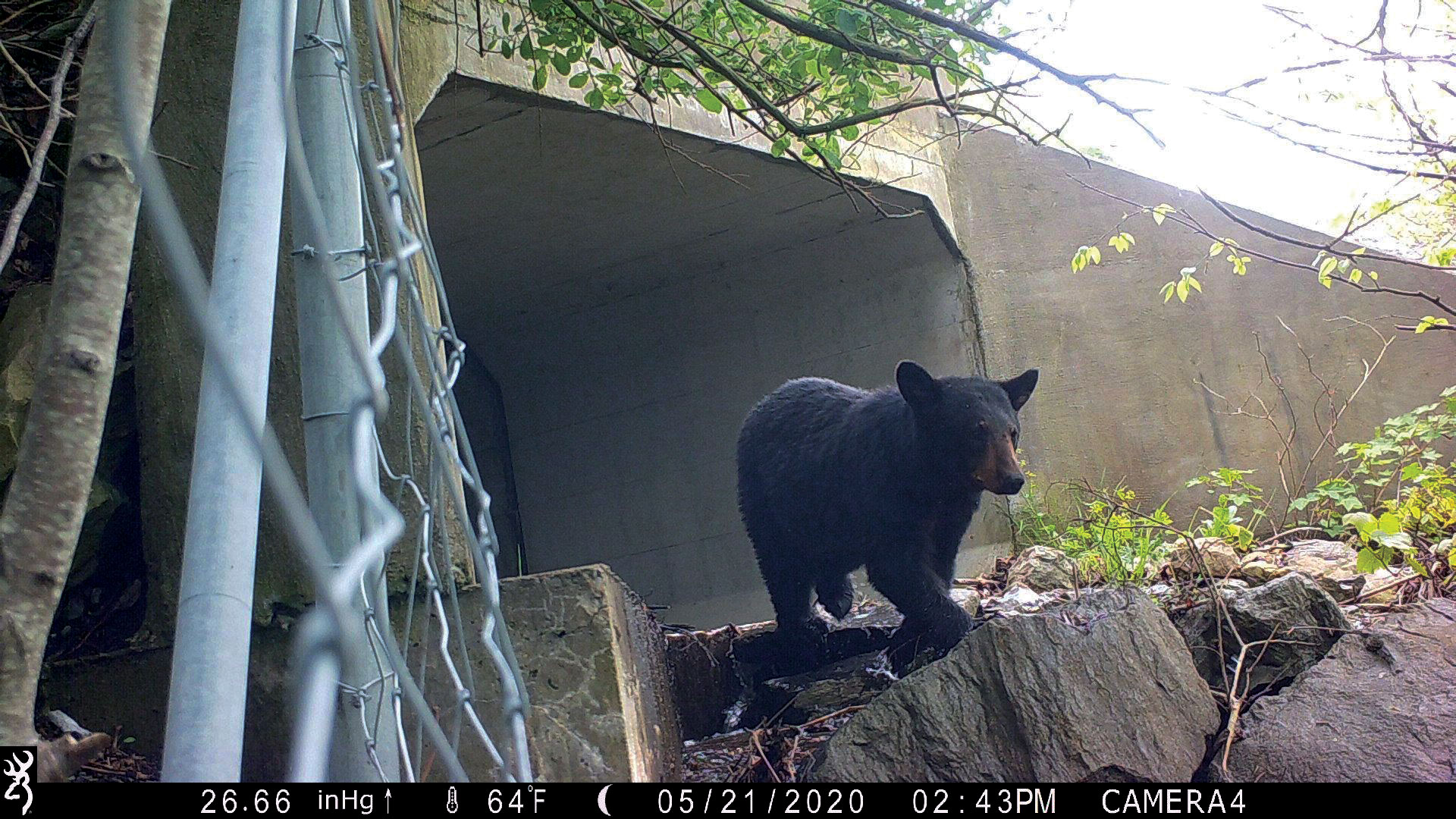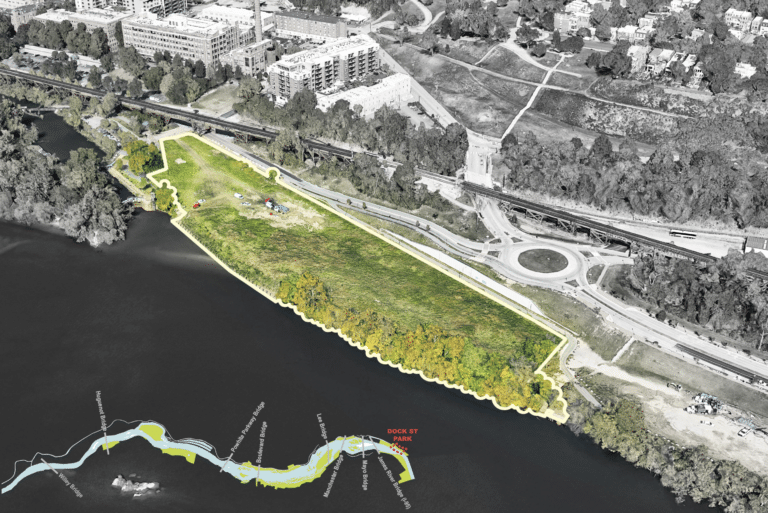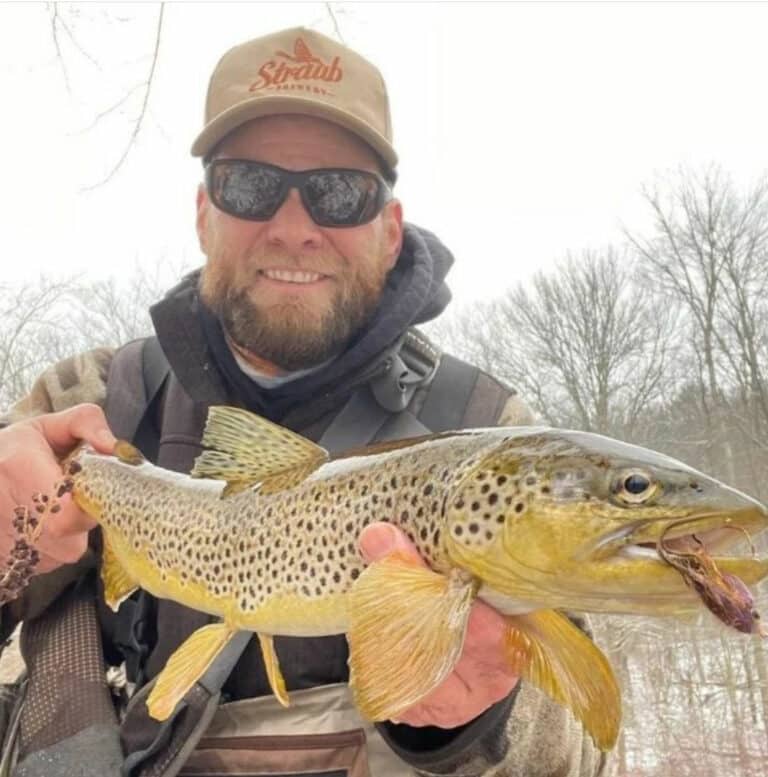The Pigeon River Gorge section of Interstate 40 is one of the deadliest stretches of interstate in the country. A new project hopes to make it safer for humans and wildlife.
The wiggles. That’s what my five-year-old son called the sinuous stretch of Interstate 40 near the North Carolina-Tennessee border when we first drove it together. The highway snakes back and forth through a narrow, steep-walled gorge, roughly following the Pigeon River on the border of Great Smoky Mountains National Park. Rock faces rise sharply from the road, and landslides are common. Tractor trailers often overturn. Two long tunnels make it even more treacherous. It’s one of the deadliest 28 miles in the country—for humans and wildlife.
My toddler giggled as our car careened back and forth through the gorge, but my wife was tense. A cold rain began to fall, and I white-knuckled the wheel as semi-trailers rumbled past.
“What’s that?” my son asked. He pointed to a black blob of fur on the shoulder. I didn’t say anything, but he already knew: it was a dead bear cub. Blood trickled out from the carcass onto the wet road.
Interstate 40 stretches 2,560 miles from California to the Eastern coast, but the Pigeon River Gorge section has more accidents and fatalities than any other section.
More than 26,000 vehicles pass through the gorge each day, and that number continues to rise. This stretch of interstate is adjacent to Great Smoky Mountains National Park, the most visited and the second most popular park in the country.
An estimated 1,900 black bears call the park home. The Smokies are the largest black bear refuge in Appalachia.
But bears and other animals don’t recognize park boundaries. They travel in search of food, shelter, and mates. To do this, that means they have to cross roads like interstate 40. More than 90 percent of male black bears and 50 percent of female black bears travel outside the park boundary each year, including through the Pigeon River Gorge.
Bears, deer, elk, and other wildlife have been moving across this gorge for millennia. It wasn’t until 1968 that a four-lane interstate with walls and barriers was built through it, interrupting a major wildlife corridor for the eastern U.S. Construction crews cut the road through the mountainside and sheared steep rock walls along the route. Animals that successfully make it across concrete dividers and four lanes of interstate can find themselves pinched between traffic and impassable cliffs on a very narrow shoulder.
Bear fatalities have quadrupled since the interstate opened. In 2018 alone, 35 black bears were killed along this stretch of highway. Some biologists estimate as many as 70 bears may be killed here each year, and it’s impossible to count those not reported or those who make it off the interstate only to die later in the forest.
Deer, fox, bobcat, coyote, and recently reintroduced elk are also being killed in increasing numbers trying to cross the interstate.
Those collisions are dangerous for people, too. A bull elk can weigh up to 900 pounds, causing even more damage than a bear. Vehicle collisions with wildlife cost over $12 billion a year and take hundreds of lives in the U.S.
Fortunately, a new coalition is proposing an innovative solution: bridges, tunnels, and other crossings for bears and other wildlife. Safe Passage: the I-40 Pigeon River Gorge Wildlife Crossing Project—hopes to build wildlife overpasses and underpasses across the interstate to reduce collisions and make it safer for animals and people to travel through the Pigeon River Gorge.
The timing is key: North Carolina Department of Transportation is planning to replace at least four bridges in the Pigeon River Gorge over the next five years. This presents a timely and critical opportunity to integrate wildlife crossings and fencing into the bridge designs.
Safe Passage has already collected two years’ worth of data in the gorge. They have used wildlife cameras to document animals traversing the gorge. The data could help inform decisions around the most important locations for possible wildlife overpasses or underpasses.
The North Carolina Department of Transportation and Tennessee Department of Transportation are working closely with the Safe Passage coalition, which consists of 20 partner organizations from across the region, including National Parks Conservation Association, Wildlands Network, Defenders of Wildlife, Great Smoky Mountains Association, The Conservation Fund, and the North Carolina Wildlife Federation.
“Reconnecting this landscape is essential for future generations of humans and wildlife,” says Jeff Hunter, program manager for National Parks Conservation Association and the facilitator for the Safe Passage collaborative. “If you can provide an opportunity for safe passage, over generations, bear and elk and deer will teach their young to use those structures. It will keep the animals out of the road and improve safety for humans and wildlife.”
Wildlife crossings have proven successful in aiding panthers in Florida, jaguars in Mexico, and grizzlies in the Western United States and Canada. In some areas, wildlife overpasses and underpasses have achieved 85 to 95 percent reductions in wildlife mortality, according to a 2017 University of Montana study.
Appalachia is one of the most important corridors in the country for wildlife migration. The network of public lands along the Appalachian spine provides critical connectivity for species to travel between islands of protected lands across the Eastern United States. Providing passages in the Appalachian corridor will become increasingly important as more species migrate due to changing climate and increasing development.
Already, the Safe Passage coalition for the Pigeon River Gorge has attracted broad political support. Everyone wants to protect wildlife and make travel safer for motorists.
But overpasses and underpasses aren’t cheap. An underpass can cost $500,000, and an overpass can cost as much as $10 million. Overpasses and underpasses are usually accompanied by fencing that funnels wildlife toward these crossings, which can cost up to $100,000 per mile.
North Carolina’s Department of Transportation is willing to put wildlife considerations in its bridge replacement designs, but Safe Passage may have to raise a significant chunk of money to cover the cost of fencing.
Investments in wildlife crossings are worth every penny, says Hunter. Wildlife crossings lead to fewer vehicle accidents and healthier, more resilient wildlife populations. “They keep animals safe and people safe. They are a winning solution for everyone.”
Learn more at smokiessafepassage.org.
Cover photo: An estimated 70 bears are killed annually on a winding 28-mile stretch of I-40. Photo Courtesy of National Parks Conservation Association and Wildlands Network








